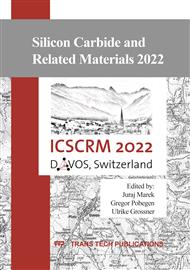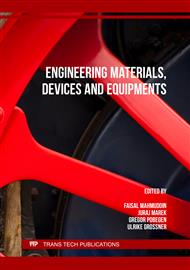p.41
p.51
p.57
p.69
p.77
p.83
p.89
p.95
p.101
Early Burn-In Parasitic Conduction in 500 °C Durable SiC JFET ICs
Abstract:
All prior reports of long-term 500 °C operation of SiC JFET-R ICs have noted the existence of an initial “burn-in” period of changes in measured electrical characteristics for the first few hundred hours oven-testing. This work reports measurements of “burn-in parasitic MOSFET conduction” that can substantially impact the performance of some circuits during initial heat-up of JFET ICs, but then subsequently disappears after a few hours of operation at 500 °C. The behavior appears generally consistent with the known MOS phenomenon of bias-temperature driven redistribution of mobile ionic contamination. Approaches for further mitigating this initial burn-in conduction mechanism are discussed.
Info:
Periodical:
Pages:
77-82
Citation:
Online since:
June 2023
Authors:
Keywords:
Permissions:
Share:
Citation:



